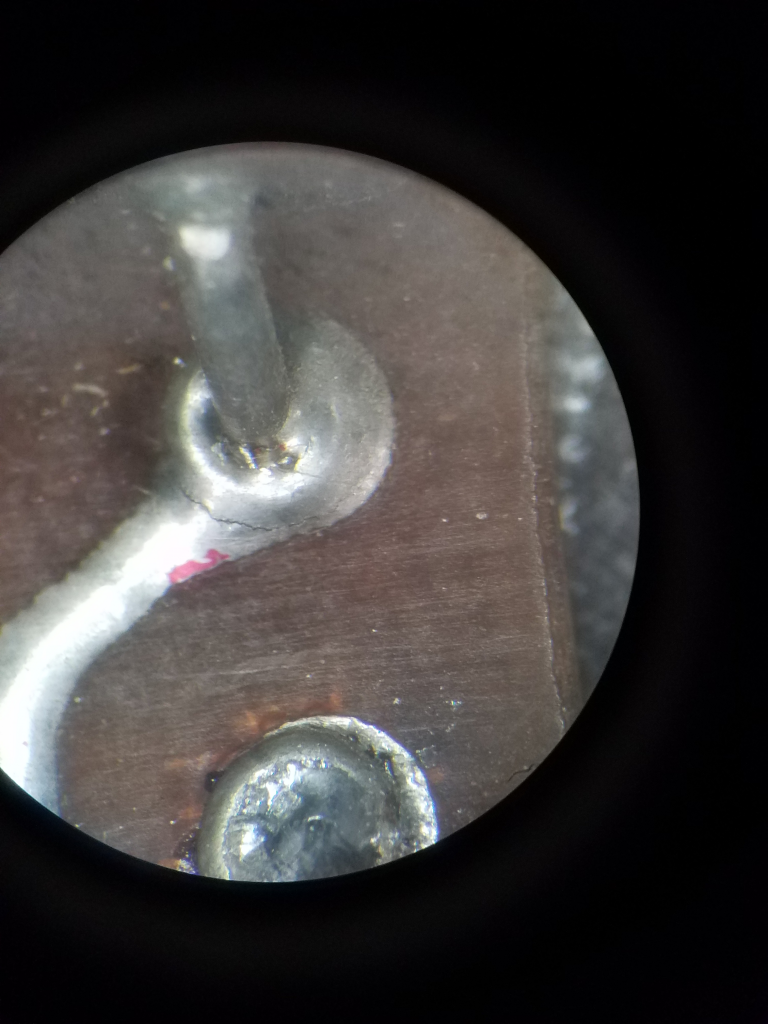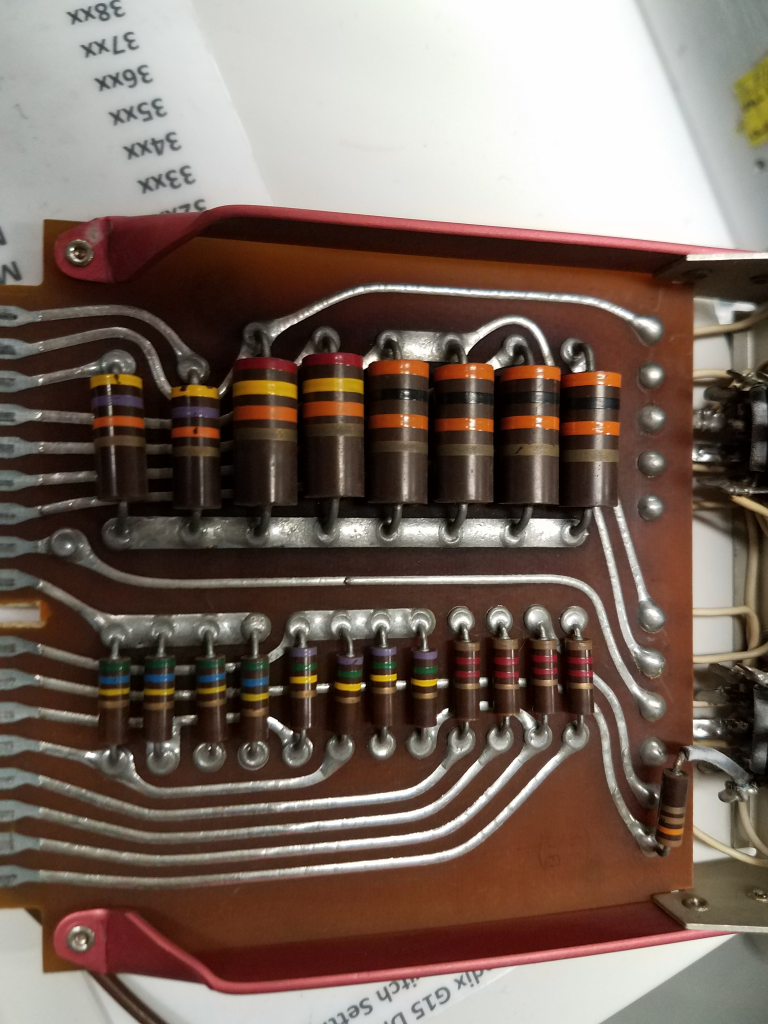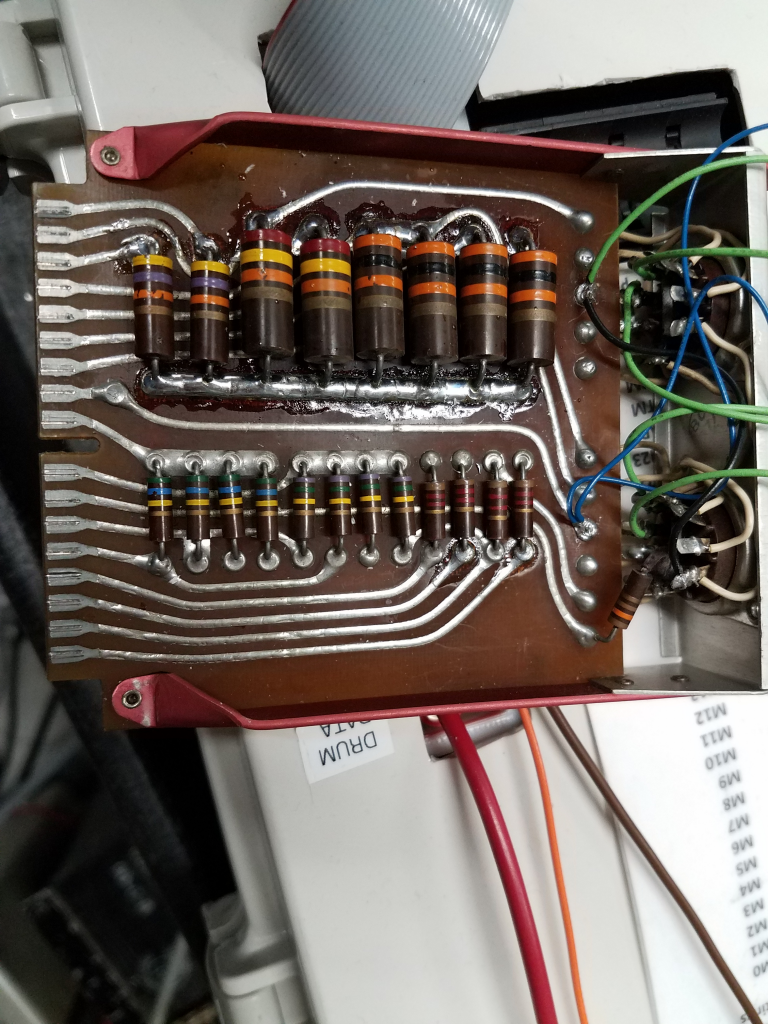By Keith P.
In the process of restoring the Bendix G-15, we have discovered a phenomena that degrades the electrical connections which provide bias and signal flow, rendering the computer non-functional.
Failed Connections
Below is a group of photos which illuminate this failure mode called “electromigration”. This process is caused by a continuous DC potential applied to a metal junction. Metal ions migrate in the direction of current flow. For most new machines, this is not a problem as this process takes quite a number of years to progress to the point where the electrical connection is broken. At LCM+L, we get machines after they had run for a long time. Worse yet, since it is our intent to restore and run the machines for as long as we can, it is necessary to find a solution that allows that maintenance need only be done every decade or so.
 A failed connection ( as verified with an ohmmeter ). Please note the circular crack running around and just above the base of the circular conductor.
A failed connection ( as verified with an ohmmeter ). Please note the circular crack running around and just above the base of the circular conductor.
 A similar failed connection.
A similar failed connection.
 This one hadn’t quite failed. You can see just a small connection at around 260 degrees. This connection will fail in a fairly short period of time.
This one hadn’t quite failed. You can see just a small connection at around 260 degrees. This connection will fail in a fairly short period of time.
Failing Solder
This same phenomena plays out in the metal structure of the solder itself. The photos below show the before and after of solder restoration. In the first photo, the solder looks dull and mottled. This is due to the tin having migrated out leaving only lead in the Tin/Lead solder formulations used until the early 2000’s. The modern formulations are Tin/Silver/Copper and are much less likely to have metal ion migration.
 The large resistors at the top show the effects of tin migration.
The large resistors at the top show the effects of tin migration.
 After removing the old solder and replacing it with a modern formulation, you can see the solder is smooth and bright, indicating good integrity.
After removing the old solder and replacing it with a modern formulation, you can see the solder is smooth and bright, indicating good integrity.
Long, Repetitive Work
This restoration process took quite a while. After determining that all the tube modules in the machine were affected in this way, we simply set about removing a module and then removing and replacing the solder in all the high, continuous current sections.
An interesting article on solder, covering some of the topics mentioned in the article can be found at: https://en.wikipedia.org/wiki/Solder